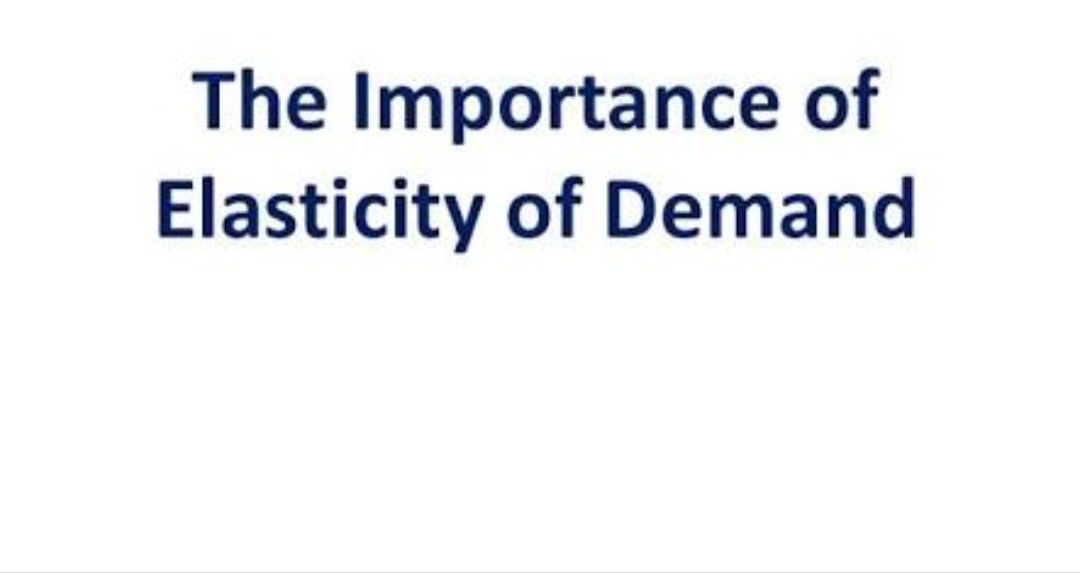The law states that if all other factors are fixed and one input is varied in the short run, the total output will increase at an increasing rate at first instance, be constant at a point and then eventually decrease.Marginal product will become negative at last. According to G.Stigler, “As equal increments of one input […]
Economics
Production Function
Production function refers to the relationship among units of the factors of production (inputs) and the resultant quantity of a good produced (output). According to George J. Stigler, “Production function is the relationship between inputs of productive services per unit of time and outputs of product per unit of time.” Production function may be expressed […]
Organization
The man behind organizing the business is called as ‘Organizer’ or ‘Entrepreneur’. An organiser is the most important factor of production. He represents a special type of labour. Joseph Schumpeter says that an entrepreneur innovates, coordinates other factors of production, plans and runs a business. He not only runs the business,but bears the risk of […]
Capital
Marshall says “capital consists of all kinds of wealth other than free gifts of nature, which yield income”. Bohm-Bawerk defines it as ‘a produced means of production’. As said earlier, capital is a secondary means of production. It refers to that part of production which represents ‘saving used as investment’ in the further production process. […]
What is the meaning Of Labour.What are all the characteristics of labour
Labour is the active factor of production. In common parlance, labour means manual labour or unskilled work. But in Economics the term ‘labour’ has a wider meaning. It refers to any work undertaken for securing an income or reward. Such work may be manual or intellectual. For example, the work done by an agricultural worker […]
Land
In ordinary sense ‘land’ refers to the soil or the surface of the earth or ground.But, in Economics, land means all gifts of Nature owned and controlled by human beings which yield an income. Land is the original source of all material wealth. The economic prosperity of a country depends on the richness of her […]
Production Analysis
“Production is any activity diverted to the satisfaction of other people’s wants through exchange”. – J R Hicks Introduction: Production is a process of using various material and immaterial inputs in order to make output for consumption. Production process creates economic well-being.The satisfaction of needs originates from the output. Production is the result of cooperation […]
Price line or Budget line and Consumer Equilibrium and Conclusion
Price line or Budget line: Demand for a good depends upon (i) preference for that good and (ii) purchasing power. The preference pattern is represented by set of Indifference curves. The purchasing power depends on his money income and price of the goods.The money income and price level are represented by budget line. The budget […]
Properties of the Indifference Curves
Indifference curves are subjective and unique to each person. Nevertheless they have in common the following properties: 1. Indifference curve must have negative slope: An indifference curve has a negative slope, which denotes that if the quantity of commodity (y) decreases, the quantity of the other (x) must increase, if the consumer is to stay […]
Diminishing Marginal Rate of Substitution and Properties of the Indifference Curves
It explains the concepts of diminishing marginal rate of substitution. Since y decrease as x increases, the change in y is negative i.e., -Δy, so the equation is MRSxy =Y X However, as with price elasticity of demand the convention is to ignore the minus sign in MRSxy= Y X
An Indifference Curve and An Indifference Map
An Indifference Curve: Different combinations of two commodities (as found in Indifference Schedule) can be presented in a diagram.Then consumer gets different points and when such points are connected,a curve is obtained. The said curve is called as “Indifference Curve”. Therefore,an indifference curve is the locus of all combinations of commodities from which the consumer […]
Ordinal analysis (or) Ordinal Utility Approach (or) Hicks and Allen Approach (or) Indifference Curve Analysis
Introduction: F.W.EdgeWorth (English Economist) and Vilfredo Pareto (Italian Economist)criticised the Cardinal Utility Approach.They assumed that utility cannot be measured absolutely, but can be compared or ranked or ordered by ordinal numbers such as I, II, III and so on. Edgeworth first developed a more scientific approach to the study of consumer behaviour, known as “Indifference […]
Importance of Elasticity of Demand
The concept of elasticity of demand is of much practical importance. 1. Price fixation: Each seller under monopoly and imperfect competition has to take into account elasticity of demand while fixing the price for his product. If the demand for the product is inelastic, he can fix a higher price. 2. Production: Producers generally decide […]
Measurement of Elasticity of Demand
There are three methods of measuring price elasticity of demand. 1. The Percentage Method: ep=QPPQ´ It is also known as ratio method, when we measure the ratio as: ep =P where, %Q= percentage change in demand %P = Percentage change in price 2. Total Outlay Method: Marshall suggested that the simplest way to decide whether […]
Determinants of Elasticity of Demand
There are many factors that determine the degree of price elasticity of demand.Some of them are described below: a) Availability of Substitutes: If close substitutes are available for a product, then the demand for that product tends to be very elastic. If the price of that product increases, buyers will buy its substitutes; hence fall […]
Levels or Degrees of Price Elasticity of Demand
Definition: The Price Elasticity of Demand is commonly known as the elasticity of demand, which refers to the degree of responsiveness of demand to the change in the price of the commodity. 1. Perfectly Elastic Demand (Ep = ∞): The demand is said to be perfectly elastic when a slight change in the price of […]
Elasticity of Demand
The Law of Demand explains the direction of change in demand due to change in the price. It fails to explain the rate of change in demand due to a given change in price. Elasticity of demand explains the rate of a change in quantity demanded due to a given change in price. “Elasticity of […]
Movement along Demand Curve and Shift in the Demand Curve
In the diagram 2.7, at point A, the price OP2 and quantity demanded is OQ2. When price falls to OP3 (movement along the demand curve A to C) the quantity demanded increases to OQ3. If price rises to OP1 (movement from A to B) quantity demanded decreases to OQ1 Shift in the Demand Curve: A […]
Reasons for Exceptional Demand Curve and Extension and Contraction of Demand
Reasons for Exceptional Demand Curve:1. Giffen Paradox: The Giffen good or inferior good is an exception to the law of demand. When the price of an inferior good falls, the poor will buy less and vice versa. 2. Veblen or Demonstration effect:Veblen has explained the exceptional demand curve through his doctrine of conspicuous consumption. Rich […]
Determinants of Demand
1. Changes in Tastes and Fashions: The demand for some goods and services is very susceptible to changes in tastes and Fashions. 2. Changes in Weather: An unusually dry summer results in a increase in the demand for cool drinks. 3. Taxation and Subsidy: If fresh taxes are levied or the existing rates of taxation […]



















